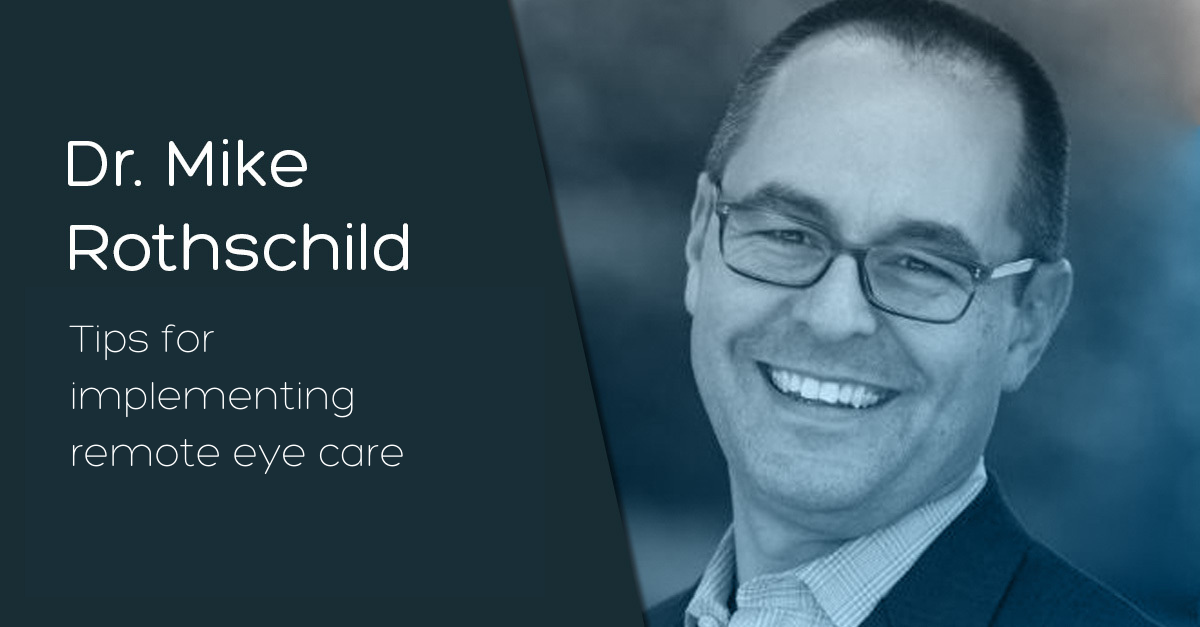Dr. Mike Rothschild’s tips for implementing remote eye care
25th March 2022

We recently caught up with Dr. Mike Rothschild, who shared his steps for eye care professionals and practices looking to implement remote eye care…
Is a hybrid eye care model, virtual and in-clinic, the best way to go?
I believe the hybrid model is perfect, and the first way to go about implementing it is to incorporate a VAHOV (Virtual At Home Optometry Visit). In this case, optometrists can be in the office seeing patients as usual, before scheduling follow-up VAHOVs. Dry eye follow-ups; contact lens fittings; myopia management; and anything I call ‘sick eyes’, which is treatment for conjunctivitis or any type of eye irritation; these can all be done this way.
Dry eye follow-ups in particular lend themselves to remote eye care. You can establish a treatment plan with the patient during an appointment in the practice, before scheduling a follow-up VAHOV a month or six months later depending on your protocol. This is much better for the patient, and better for you because you’ll be able to see if your treatment is working, see if your patient is appreciating, and you’ll have the chance to evaluate and make any adjustments if necessary.
What else can work well in remote eye care?
A lot of ECPs are now using it to triage. They’ll have the first visit with the patient digitally, getting the exam started by finding out what the patient needs and any concerns they have. This allows them to customise their in-office exam based on patient needs.
One thing people can implement in remote care, which I think works better than in-person care, is low vision. We often bring people into the office for low vision when they have some kind of vision impairment which requires magnifiers, telescopes or special devices. We bring them into our controlled environment in the clinic which has the perfect lighting and optimal distances, but how much better would it be to have the patient at home, using the lighting they’re used to at home? By performing tests using this technology you’re able to get into the environment they have at home, guide them through the use of those devices while they’re in their own personal setting.
Many practices are struggling with patient backlog and staff shortages – what would your advice be to them?
My number one piece of advice is to set aside time for reflection. This will help you to get yourself into a position where you can cut away the things you don’t want to do, or that someone else can do, which will give you the time for improvement which is the most critical piece of your job.
It’s essential to give our attention to the financial and business side of things to make sure we’re acting responsibly but taking better care of our patients should always be the motivation. We need to think about our patients’ pain points – if you’re asking them to return to your office to check whether your treatment plan is working, you’re actually asking them to take time off work again, drive across town to your practice, pay for parking and in some cases and pay an exam fee. Even though it’s just an exam taking a few minutes, it can be very disruptive to your patient, which is why remote care is so beneficial for improving their experience.
If you’d like to find out more about how remote eye care can benefit your practice, get in touch with AOS today.
